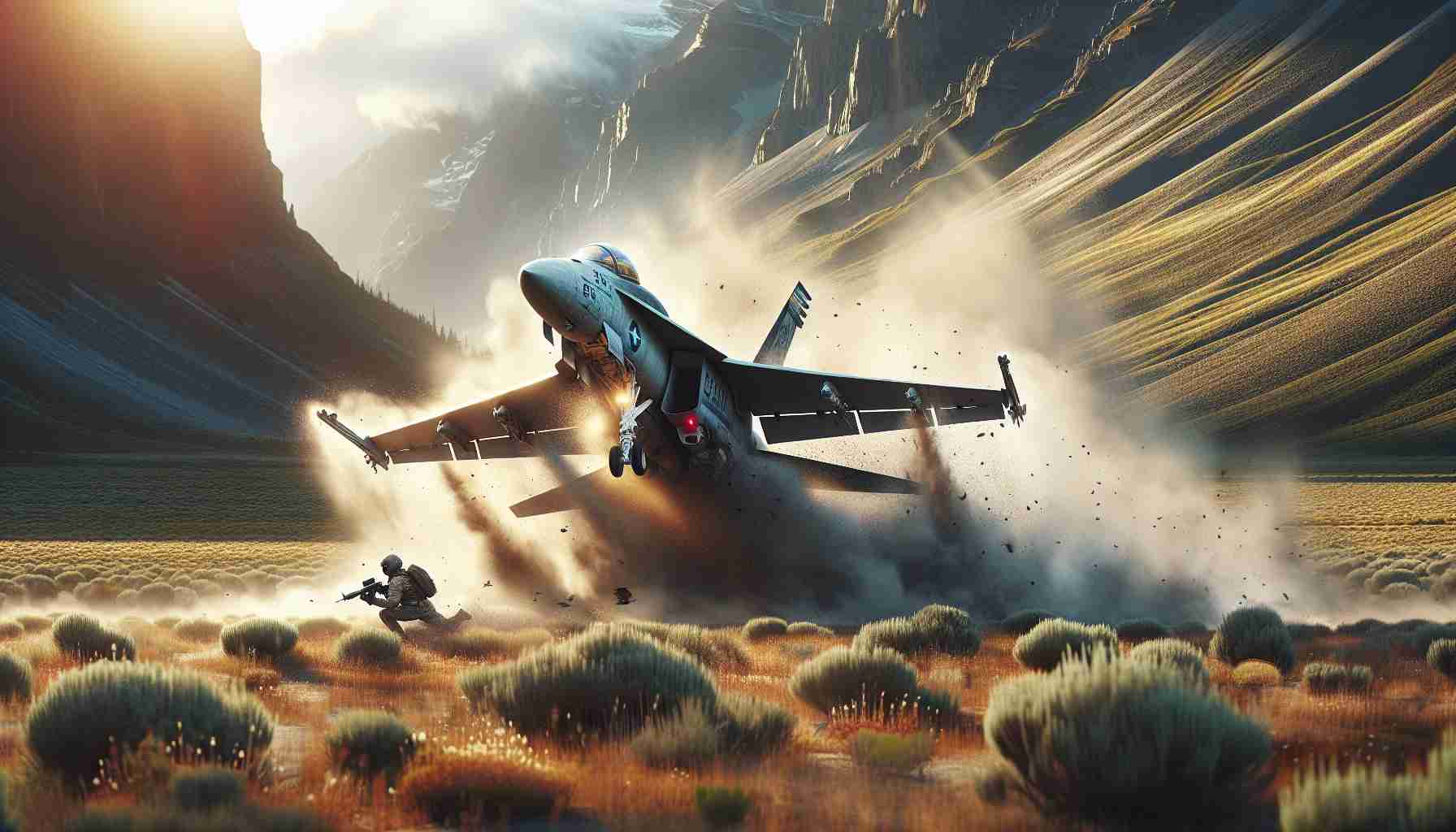The F-35C Lightning II, renowned for its advanced design tailored for carrier operations, found itself at the center of an intense incident on January 24, 2022. The USS Carl Vinson, navigating the challenging waters of the South China Sea, experienced a dramatic runway mishap as this sophisticated fighter jet approached for landing.
On that fateful afternoon, as the F-35C attempted a standard carrier landing, things took an unexpected turn. Multiple video recordings from the carrier’s control room and an eyewitness’s smartphone footage later surfaced online, capturing the dramatic moment the aircraft skidded along the deck before careening off the side of the ship. This incident highlighted the preparedness of the crew who swiftly addressed the unexpected turn of events. Notably, while rapid-response actions were initiated, the use of personal devices aboard led to internal reprimands for several members of the crew, all of whom remained on active duty post-incident.
The report that followed not only dissected the crash and its causes but also provided insights into the complexity of carrier landings. Modern jets, with their increased speeds, demand precision from pilots who must navigate the narrow confines of a moving deck. The incident underlines how crucial precision landing procedures are, especially when minutes and meters can make all the difference.
The investigation also shed light on the multitude of landing strategies available to naval aviators, particularly the use of expedited recovery techniques, designed to hasten landings while maintaining safety—a demanding practice that challenges even the most seasoned pilots.
The High-Stakes Drama of Carrier Landings: Beyond the F-35C Mishap
The unexpected incident involving the F-35C Lightning II landing on the USS Carl Vinson offers more than just a singular tale of mishap; it opens a window into the intricate world of carrier aviation and its impact on modern technology and warfare strategies. Beyond the obvious challenges highlighted by this specific event, the broader implications for technology and humanity’s future loom large.
The Evolution of Carrier Aviation: A Technological Marvel
Carrier-based aviation is one of the most advanced segments of military operations, marrying cutting-edge technology with human precision and expertise. The evolution of fighter jets such as the F-35C is driven by the need for balance between power and agility. The F-35C’s design reflects advancements aimed at tackling unique challenges like those posed by short and moving runways on aircraft carriers.
How Does It Affect Technological Development?
Advanced jets like the F-35C push the boundaries of current technology, spearheading innovations in avionics, stealth capabilities, and pilot-assist systems. The complexities of carrier landings drive developments in augmented reality navigation and next-generation autopilot systems, which could transcend military use, trickling down into civilian aviation and even autonomous vehicle technologies.
Intriguing Ally or Unseen Adversary?
The technologies derived from these advancements present some controversies. While they promise enhanced safety and efficiency, they also raise questions around increasing machine dependency in critical operations. Are humans becoming too reliant on technology, potentially compromising manual skills crucial in emergency scenarios?
Advantages and Disadvantages
The main advantage of revolving technologies around such high-stakes applications is the innovation spur they induce across sectors. However, there are disadvantages, notably the significant cost and resource allocation that such military advancements require. Does prioritizing military tech siphon resources away from pressing global needs like renewable energy and healthcare innovations?
Fascinating Facts and Lingering Questions
One fascinating aspect is how simulations and virtual reality have transformed pilot training, offering risk-free environments to master complex maneuvers. Yet, questions linger about whether these simulated experiences can fully prepare individuals for real-world unpredictability.
Moreover, the confidentiality and legality of personal recordings during such incidents raise vital questions about information dissemination and transparency in military settings.
The repercussions on international relations are worth considering too. The obvious strategic advantage of having such technological prowess can shift geopolitical power dynamics, necessitating diplomatic finesse.
In conclusion, while the F-35C incident shines light on specific challenges, it forms part of a broader narrative about technological advancements and their implications for human operations. The fine line between embracing innovation and ensuring human readiness remains a dynamic balance—a testament to the ever-evolving landscape of technology and its role in shaping our world.







